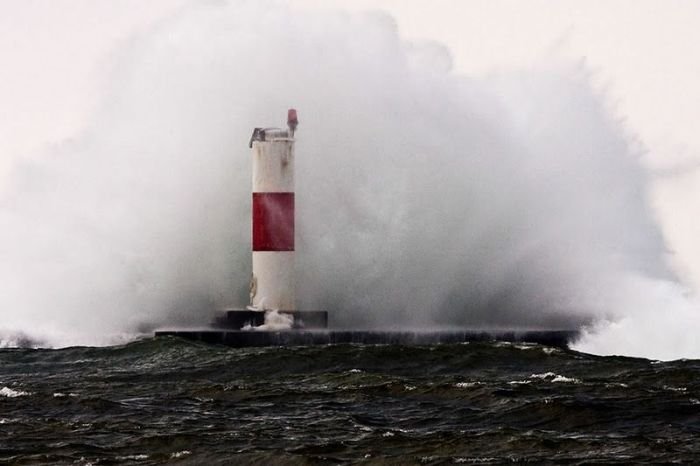|
|
Lighthouse In Waves
|
- horizontally the light is focused into one or a few directions at a time, with the light beam sweeping around; as a result, in addition to seeing the side of the light beam, one can see the light directly from a further distance away.
Fresnel lens
This concentration of light is accomplished with a rotating lens assembly. In classical period lighthouses, the light source was a kerosene lamp or, earlier, an animal or vegetable oil Argand lamp, and the lenses rotated by a weight driven clockwork assembly wound by lighthouse keepers, sometimes as often as every two hours. The lens assembly sometimes floated in mercury to reduce friction. In more modern lighthouses, electric lights and motor drives were used, generally powered by diesel electric generators. These also supplied electricity for the lighthouse keepers. Efficiently concentrating the light from a large omnidirectional light source requires a very large diameter lens. This would require a very thick, heavy lens if naïvely implemented. Development of the Fresnel lens in 1822 revolutionized lighthouses in the 19th century, focusing 85% of a lamp's light versus the 20% focused with the parabolic reflectors of the time. Its design enabled construction of lenses of large size and short focal length without the weight and volume of material in conventional lens designs. Although the Fresnel lens was invented in 1822, it was not used in the US until the 1850s due to the parsimonious administrator of the United States Lighthouse Establishment, Stephen Pleasonton. With the creation of the United States Lighthouse Board in 1852, all US lighthouses received Fresnel lenses by 1860.
|
|









